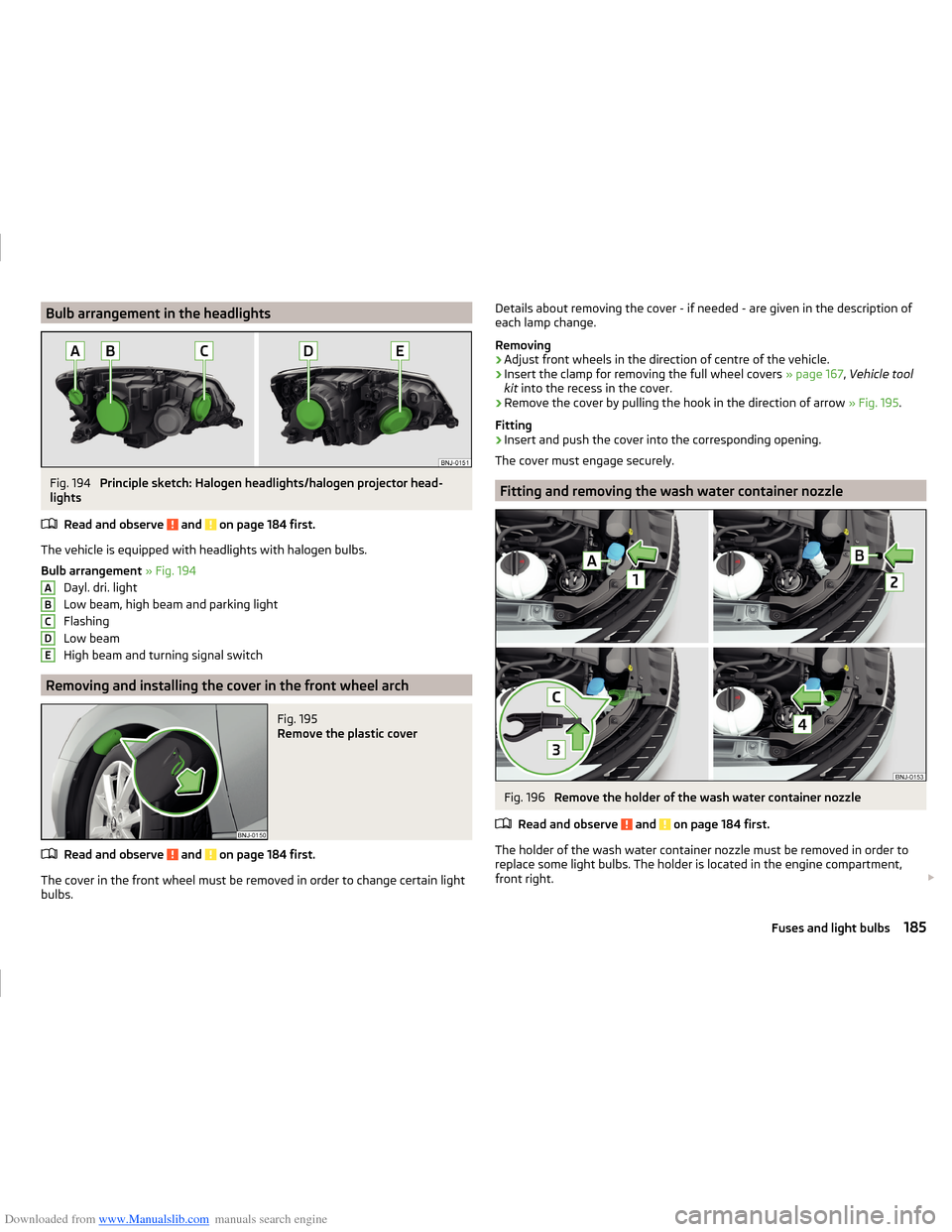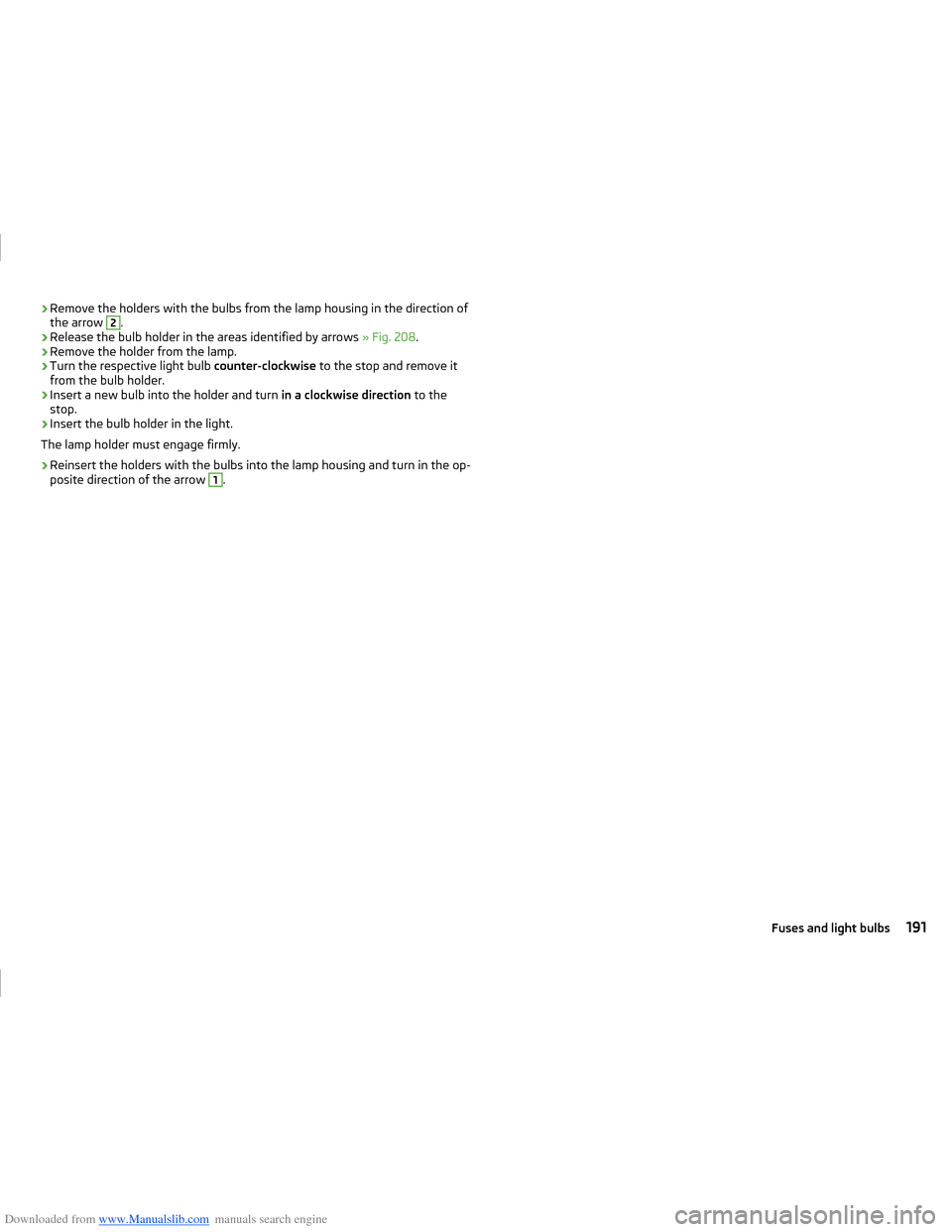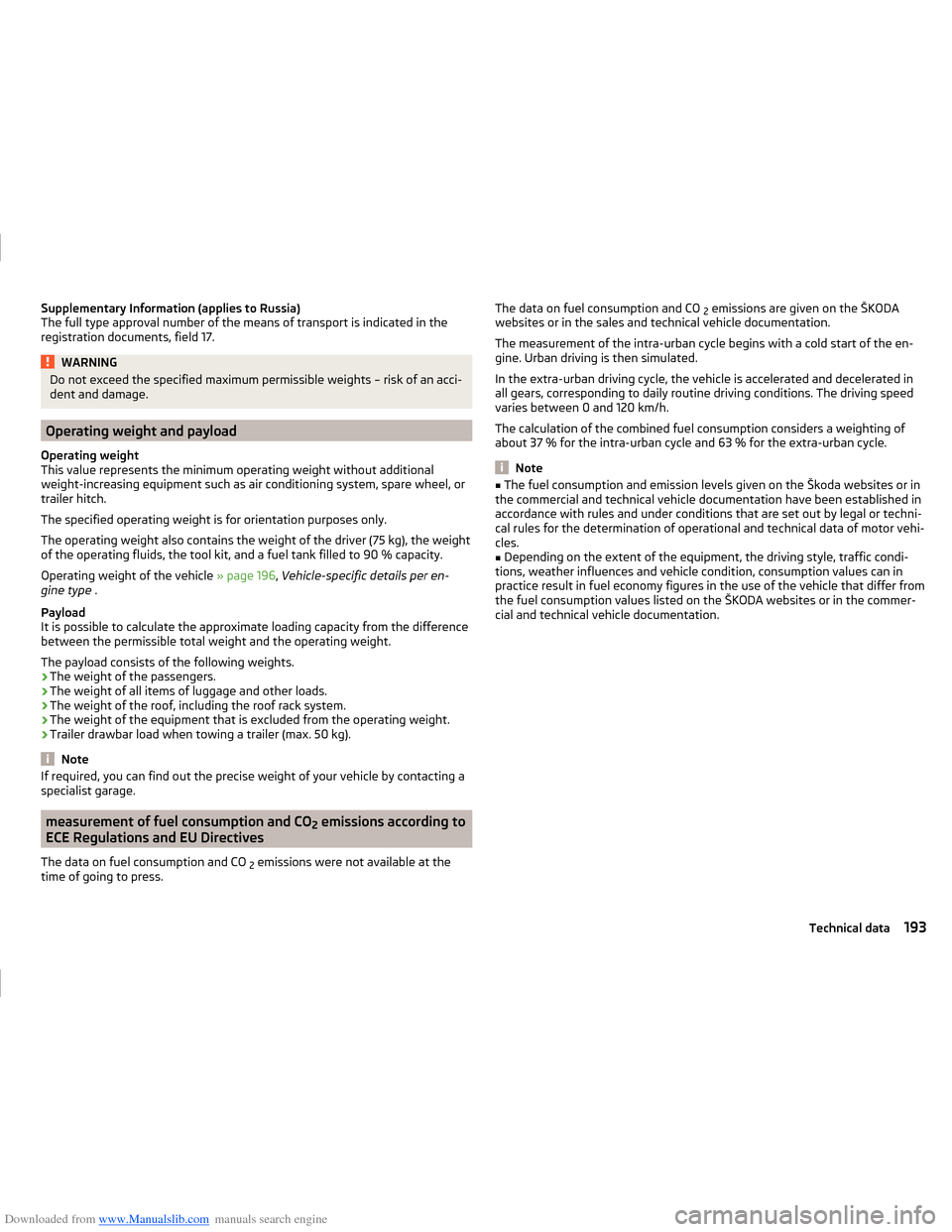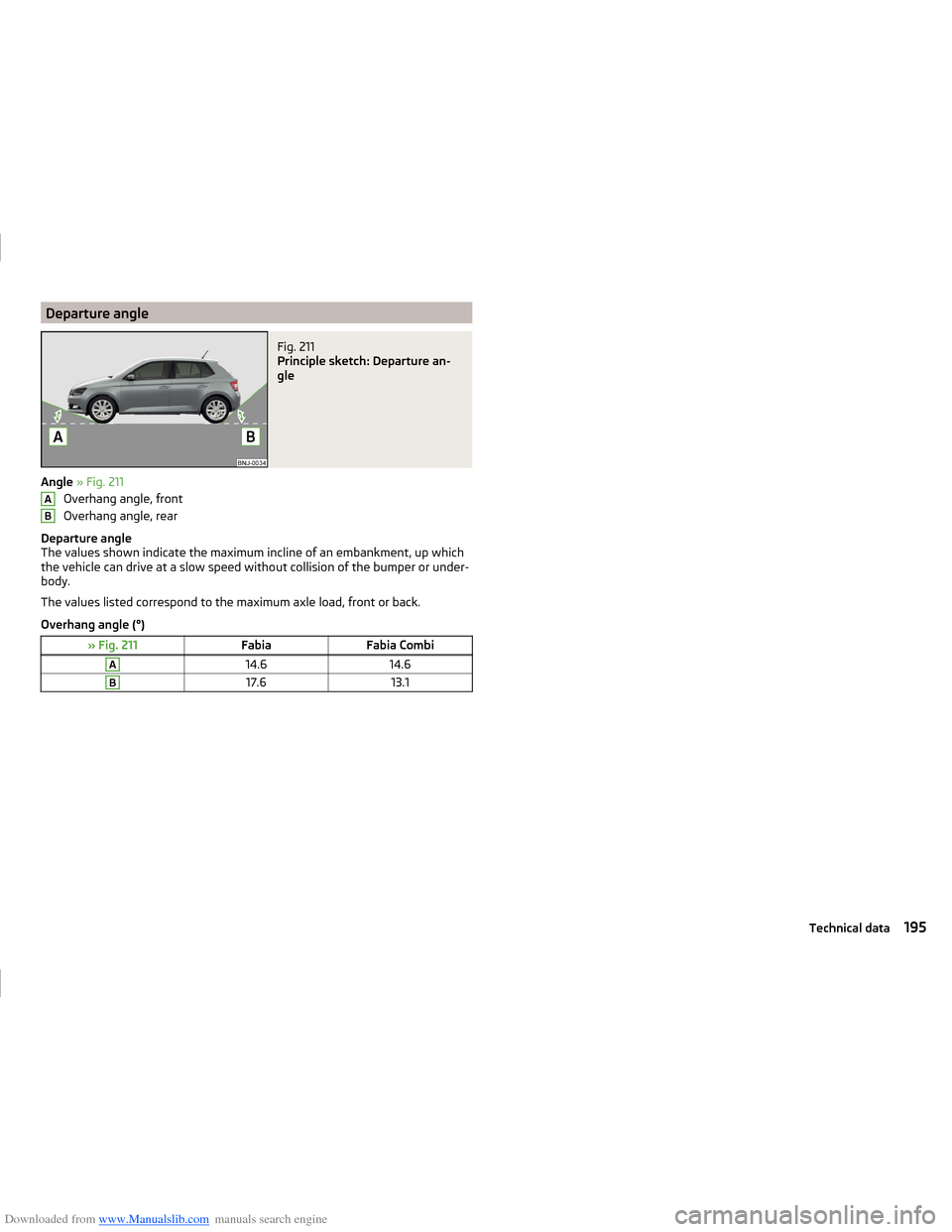ESP SKODA FABIA 2014 3.G / NJ Operating Instruction Manual
[x] Cancel search | Manufacturer: SKODA, Model Year: 2014, Model line: FABIA, Model: SKODA FABIA 2014 3.G / NJPages: 216, PDF Size: 30.9 MB
Page 188 of 216

Downloaded from www.Manualslib.com manuals search engine Bulb arrangement in the headlightsFig. 194
Principle sketch: Halogen headlights/halogen projector head-
lights
Read and observe
and on page 184 first.
The vehicle is equipped with headlights with halogen bulbs.
Bulb arrangement » Fig. 194
Dayl. dri. light
Low beam, high beam and parking light
Flashing
Low beam
High beam and turning signal switch
Removing and installing the cover in the front wheel arch
Fig. 195
Remove the plastic cover
Read and observe and on page 184 first.
The cover in the front wheel must be removed in order to change certain light
bulbs.
ABCDEDetails about removing the cover - if needed - are given in the description of
each lamp change.
Removing›
Adjust front wheels in the direction of centre of the vehicle.
›
Insert the clamp for removing the full wheel covers » page 167, Vehicle tool
kit into the recess in the cover.
›
Remove the cover by pulling the hook in the direction of arrow » Fig. 195.
Fitting
›
Insert and push the cover into the corresponding opening.
The cover must engage securely.
Fitting and removing the wash water container nozzle
Fig. 196
Remove the holder of the wash water container nozzle
Read and observe
and on page 184 first.
The holder of the wash water container nozzle must be removed in order to
replace some light bulbs. The holder is located in the engine compartment,
front right.
185Fuses and light bulbs
Page 194 of 216

Downloaded from www.Manualslib.com manuals search engine ›Remove the holders with the bulbs from the lamp housing in the direction of
the arrow 2.›
Release the bulb holder in the areas identified by arrows » Fig. 208.
›
Remove the holder from the lamp.
›
Turn the respective light bulb counter-clockwise to the stop and remove it
from the bulb holder.
›
Insert a new bulb into the holder and turn in a clockwise direction to the
stop.
›
Insert the bulb holder in the light.
The lamp holder must engage firmly.
›
Reinsert the holders with the bulbs into the lamp housing and turn in the op-
posite direction of the arrow
1
.
191Fuses and light bulbs
Page 196 of 216

Downloaded from www.Manualslib.com manuals search engine Supplementary Information (applies to Russia)
The full type approval number of the means of transport is indicated in the
registration documents, field 17.WARNINGDo not exceed the specified maximum permissible weights – risk of an acci-
dent and damage.
Operating weight and payload
Operating weight
This value represents the minimum operating weight without additional
weight-increasing equipment such as air conditioning system, spare wheel, or
trailer hitch.
The specified operating weight is for orientation purposes only.
The operating weight also contains the weight of the driver (75 kg), the weight
of the operating fluids, the tool kit, and a fuel tank filled to 90 % capacity.
Operating weight of the vehicle » page 196, Vehicle-specific details per en-
gine type .
Payload
It is possible to calculate the approximate loading capacity from the difference
between the permissible total weight and the operating weight.
The payload consists of the following weights.
› The weight of the passengers.
› The weight of all items of luggage and other loads.
› The weight of the roof, including the roof rack system.
› The weight of the equipment that is excluded from the operating weight.
› Trailer drawbar load when towing a trailer (max. 50 kg).
Note
If required, you can find out the precise weight of your vehicle by contacting a
specialist garage.
measurement of fuel consumption and CO 2 emissions according to
ECE Regulations and EU Directives
The data on fuel consumption and CO 2 emissions were not available at the
time of going to press.
The data on fuel consumption and CO 2 emissions are given on the ŠKODA
websites or in the sales and technical vehicle documentation.
The measurement of the intra-urban cycle begins with a cold start of the en-
gine. Urban driving is then simulated.
In the extra-urban driving cycle, the vehicle is accelerated and decelerated in
all gears, corresponding to daily routine driving conditions. The driving speed
varies between 0 and 120 km/h.
The calculation of the combined fuel consumption considers a weighting of
about 37 % for the intra-urban cycle and 63 % for the extra-urban cycle.
Note
■ The fuel consumption and emission levels given on the Škoda websites or in
the commercial and technical vehicle documentation have been established in
accordance with rules and under conditions that are set out by legal or techni-
cal rules for the determination of operational and technical data of motor vehi-
cles.■
Depending on the extent of the equipment, the driving style, traffic condi-
tions, weather influences and vehicle condition, consumption values can in
practice result in fuel economy figures in the use of the vehicle that differ from
the fuel consumption values listed on the ŠKODA websites or in the commer-
cial and technical vehicle documentation.
193Technical data
Page 198 of 216

Downloaded from www.Manualslib.com manuals search engine Departure angleFig. 211
Principle sketch: Departure an-
gle
Angle » Fig. 211
Overhang angle, front
Overhang angle, rear
Departure angle
The values shown indicate the maximum incline of an embankment, up which
the vehicle can drive at a slow speed without collision of the bumper or under-
body.
The values listed correspond to the maximum axle load, front or back.
Overhang angle (°)
» Fig. 211FabiaFabia CombiA14.614.6B17.613.1AB195Technical data